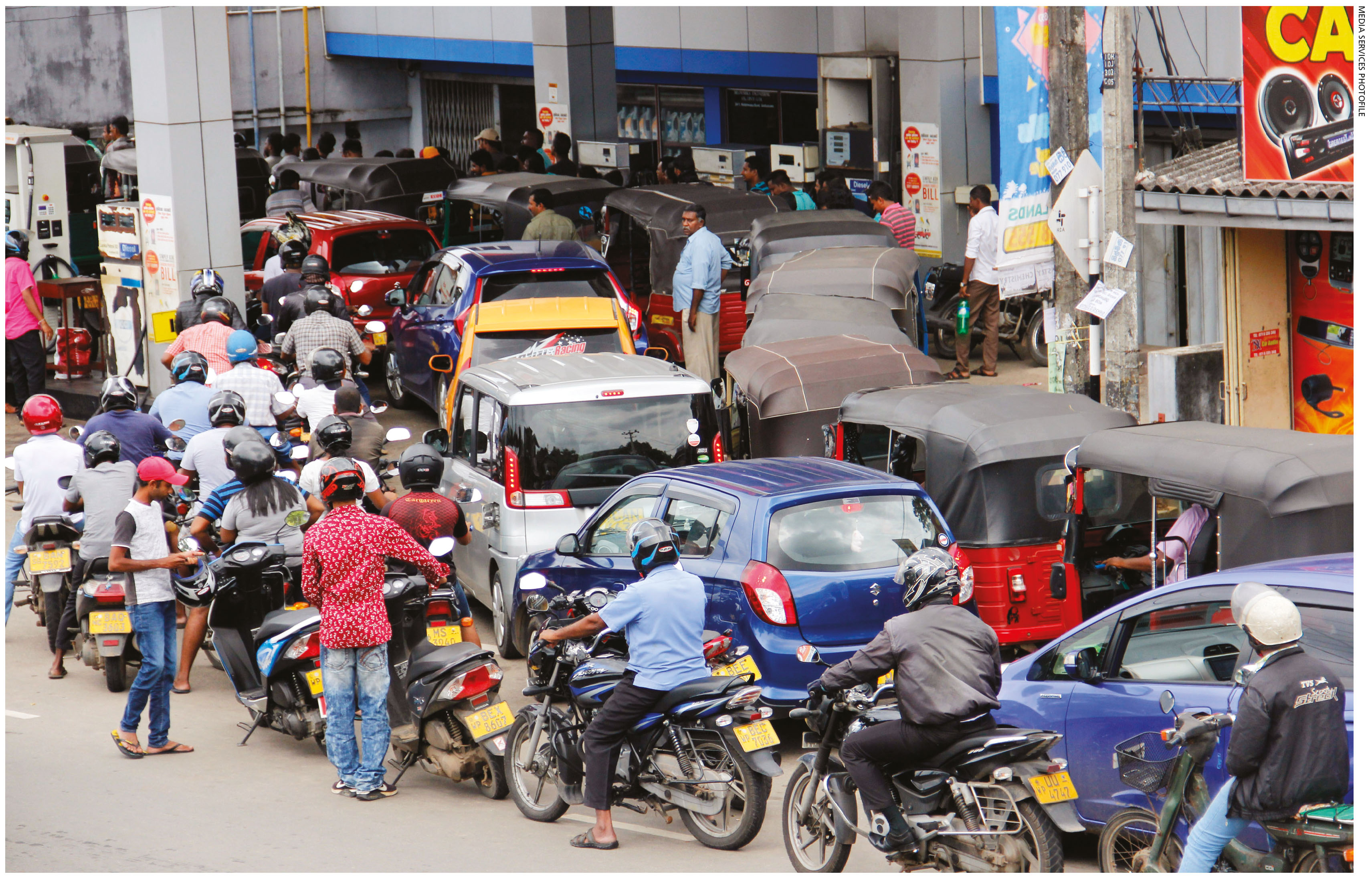PETROLEUM BLUES
THE FUEL CRISIS IN RETROSPECT
Zulfath Saheed reexamines the buildup to the recent fuel shortage in the island

Sri Lanka’s Department of Government Information declared the nation’s ‘fuel crisis’ over on 10 November, referring to the distribution of 8,200 metric tons (MT) of petrol across the country. This followed the arrival of the Neverska Lady fuel tanker, which delivered 40,000 MT of petrol from the UAE while another Indian ship was scheduled to arrive in the island carrying 21,000 MT of fuel.
Nevertheless, the episode is no doubt fresh in the memory of every island dweller that had to queue up outside fuel stations when the state run oil retailer Ceylon Petroleum Corporation (CPC) limited the supply of petrol following a delayed fuel shipment – and the rejection of another because it did not meet the required specifications.
Amidst the ensuing chaos, CPC and Lanka IOC – a subsidiary of Indian Oil Corporation – also resorted to trading blame over the fuel shortage.
BUFFER STOCKS In the buildup to the fuel crisis, the Minister of Petroleum Resources Development offered assurances that CPC had sufficient stocks in the form of 10,000 MT of petrol. He requested the public to refrain from panic buying.
At the time, the minister also noted that CPC was taking all measures to manage the prevailing petrol shortage while conveying his regret over any inconvenience caused to the public.
COUNTER CLAIMS According to media reports, the Petroleum Ministry had been requested by Lanka IOC to accept an initially rejected 35,000 MT cargo post-filtration. But the authorities had not accepted it, citing the interests of Sri Lankan consumers.
CPC trade unions, which evidently do not favour Lanka IOC’s operations in Sri Lanka, also reportedly stated that the Indian firm forced Ceylon Petroleum Corporation to accept the rejected shipment while holding its vessel on the island’s east coast.

But a communiqué issued by Lanka IOC refuted allegations that it exerted pressure on CPC to accept the original parcel without remedying it. Furthermore, the Indian firm pointed the finger at CPC for causing the petrol shortage across the country, noting that it ‘caters to 84 percent of the Sri Lankan market.”
THE BIG PICTURE Furthermore, the Petroleum Ministry revealed that there had been an interruption to CPC’s refinery operations in Sapugaskanda as a result of an electrical failure that led to a production loss over three days.
CPC trade unions have also opposed a state deal to transfer 99 oil tanks in Trincomalee to Lanka IOC, alluding to a lack of storage. They charged that the Indian firm utilises only 15 tanks while not allowing CPC to use any for storage. A spokesperson for Lanka IOC told reporters that on the back of trade union pressure, CPC would be allowed to use 10 tanks earmarked for a joint venture between the two entities.
In addition, the recent fuel shortage was set against the backdrop of Lanka IOC stating that it would hike petrol prices as it was incurring losses while CPC claimed it would not increase the price of fuel.
THE AFTERMATH A report by the cabinet subcommittee appointed by President Maithripala Sirisena to examine the cause of the fuel shortage points out that although officials were aware that a shortfall was imminent, CPC did not take action to maintain existing stocks and avert a crisis.
According to the Minister of Megapolis and Western Development, who was a member of the committee, Sri Lanka has a storage capacity for nearly 120,000 MT of fuel while the daily requirement is 2,000 MT.
Meanwhile, a Janathā Vimukthi Peramuna (JVP) MP recently told reporters that CPC had incurred a loss of nearly Rs. 6 billion as a result of purchasing fuel in spot tenders between 23 August and 3 November. He revealed that CPC was compelled to purchase 12 consignments of fuel in spot tenders as the minister in charge had failed to submit a cabinet paper in time for the purchase of fuel through long-term tenders.
RENEWED CONCERN Amidst fears of yet another petrol shortage and queues at filling stations only weeks following the crisis, CPC announced that all its depots were equipped with ample stocks of fuel.
But such is the sense of panic and uncertainty among the general public that even a phone text message that’s circulated warning of a potential petrol shortage could lead to a full-blown fuel crisis… in what seems like a mere blink of an eye!



